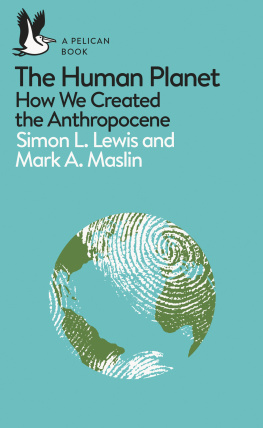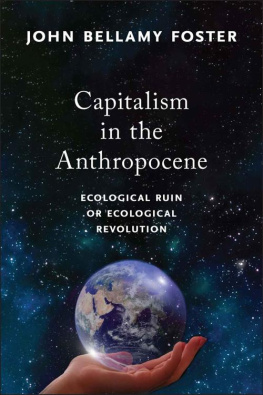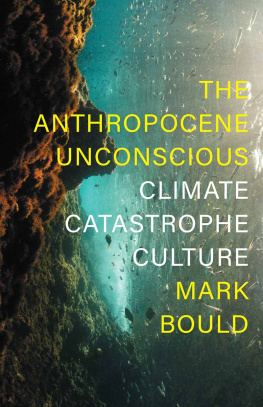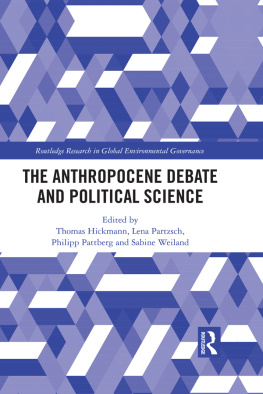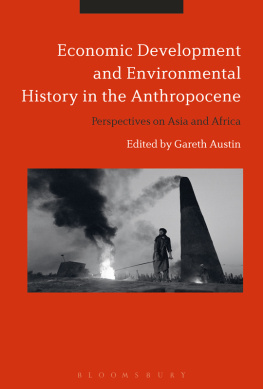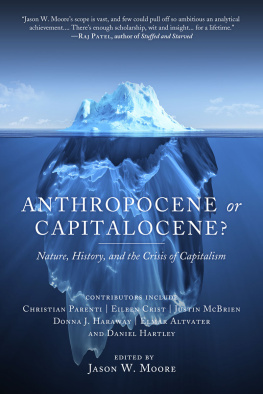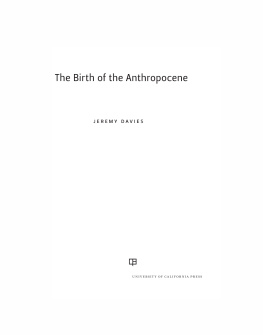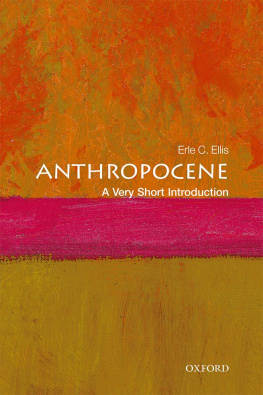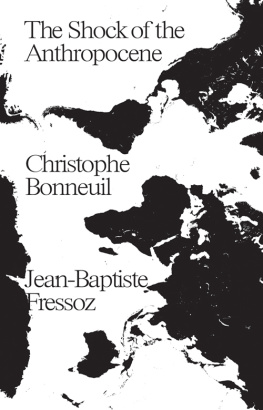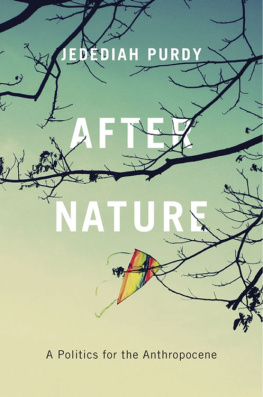PELICAN BOOKS
UK | USA | Canada | Ireland | Australia
India | New Zealand | South Africa
Penguin Books is part of the Penguin Random House group of companies whose addresses can be found at global.penguinrandomhouse.com.
First published 2018
Text copyright Simon L. Lewis and Mark A. Maslin, 2018
The moral rights of the authors have been asserted
Cover by Matthew Young
Book design by Matthew Young
ISBN: 978-0-241-28090-4
List of Figures
Major biological and geological events in the 4.54 billion-year history of the Earth
Official Geologic Time Scale for the past 541 million years
Length of Periods and Epochs over the past half-billion years
Summary of the main hominin species over the past 7 million years
Spread of Homo neanderthalensis, Homo erectus and Homo sapiens across the world
Extinct megafauna from the Americas compared to a human
Independent centres of plant and animal domestication
How changes in Earths orbit interact with the climate system to generate glacial-interglacial cycles
How widespread farming changed atmospheric carbon dioxide and methane levels thereby stabilizing Earths climate
The Colombian Exchange of plants, animals and diseases after 1492
Eighteenth- and nineteenth-century shipping routes
Decline in atmospheric carbon dioxide and population of the Americas after 1520
Spread of the Industrial Revolution across Europe
Locations of sediment cores in which spherical carbonaceous particles have been counted
Rising global energy consumption, 18302010
Changes to the human component of the Earth system between 1900 and 2010
Changes to the atmospheric component of the Earth system between 1900 and 2010
Changes to the oceanic component of the Earth system between 1900 and 2010
Changes to the land surface and biosphere component of the Earth system between 1900 and 2010
A just and safe space for humanity
Summary of the major human technological innovations, impacts on the Earth system and potential changes to the Geologic Time Scale
Summary of changes to the Earth system and suggested golden spikes to mark the beginning of the Anthropocene Epoch
Geological records showing globally correlated changes to define the base of the Anthropocene at the 1610 Orbis Spike
The current official Geologic Time Scale and three options to allow the addition of the Anthropocene Epoch
Positive (self-reinforcing) and negative (dampening) feedbacks
How a complex adaptive system moves between two stable states
Summary of the characteristics of the five modes of living occurring over human history and a tentative sixth future mode
Population growth and energy use for the five modes of living
Map of the undersea cables of the Internet
Carbon dioxide emissions over the twenty-first century in a geological context
Fraction of global gross domestic product and population in each continent in 2015
Future fossil fuel and negative emissions pathways that limit global warming to 2C.
Acknowledgements
This book is the product of two scientists attempting to make sense of the question: Why is the world like it is today? But the spark was a much narrower question. Back in 2012, one of us (Simon), was worrying about the enormous changes humans have wrought on the planet, while looking at a graph of the ever-rising amount of carbon dioxide in the atmosphere after the Industrial Revolution. A kind of epiphany occurred: the beginning of a new epoch the Anthropocene cannot be pinned on carbon dioxide emissions following the Industrial Revolution, as usually argued, since this goes against the basic scientific definition of a geological epoch. Unsure, Simon walked down the corridor to see Mark, who had trained as a marine geologist under the late great stratigraphy expert Nick Shackleton, for a much-needed second opinion. He concurred. And so began our collaboration. We wrote to the leading science journal Nature asking to write an overarching review of the evidence with which to define the Anthropocene, which seemed to be missing from the scientific literature. They agreed, and in 2015 our paper featured on the front cover, gaining worldwide media coverage. Following this, we were asked if we might write a more general book on the Anthropocene, what it is, and what it means for the future of humanity and life on Earth. This is our attempt, having received a great deal of help along the way.
We thank our UCL colleagues Jason Blackstock, Chris Brierley, Anson Mackay, Neil Rose and Chronis Tzedakis, experts from a wide range of fields, Noel Castree, Dipesh Chakrabarty, Erle Ellis, Phil Gibbard, Clive Hamilton, Bruno Latour, Glen Peters and Kathryn Yusoff, plus Julian Mossinger at Nature and UCL PhD student Alex Koch, for sharpening our ideas over the years prior to getting down to writing. Experts read the book, parts of it, or provided other important inputs, as did a number of professional writers. Our sincere thanks to: Merrick Badger, Andrew Barry, Alice Bell, Mary-Elena Carr, Paul Dukes, Jean-Baptiste Fressoz, Dorian Fuller, Garry Glass, Emma Gifford, Ellie Mae OHagan, David Harvie, Ellie Julings, Tim Lenton, Charles C. Mann, Oliver Morton, Robert Newman, Ella Ravilious, David Robertshaw, Ben Stewart, Chris Turney and Bob Ward, plus the three anonymous peer reviewers of the book, including two from the Anthropocene Working Group. Also, thanks to Miles Irving for his excellent illustrations. The book is much improved by this input. Any errors in the book are, of course, wholly ours.
We thank our editor, Casiana Ionita at Penguin in London for encouraging us to write in the first place, and Joe Calamia at Yale University Press, our US publisher, for many excellent suggestions. Thanks from Simon also go to the Arvon Centre staff and their science writing course tutors, Michael Brooks and Aarathi Prasad, and classmates Frances Bell, Aylar Farrokhzad, Sam Henry, Ali Manuchehri, Tony Martyr, Paul Moynagh and Peter Stott. Being a student trying to learn a new craft was rewarding, and perhaps more importantly, hopefully some of the lessons have been deployed to good effect in the book. Thanks from Mark also go to Will de Freitas at The Conversation for the many articles that he has kindly commissioned and beautifully edited and in doing so refined and improved Marks writing and of course got us over 1 million reads.
Our greatest thanks are to our families, who have had to put up with us spending even more time in front of a computer screen than usual: Sophie Allain and Laurie May Lewis (born mid-final edits), and Johanna, Alexandra and Abbie Maslin.
What it lies in our power to do, it lies in our power not to do.
ARISTOTLE, NICOMACHEAN ETHICS, c. 350 BC
The conquest of the earth is not a pretty thing when you look into it
JOSEPH CONRAD, HEART OF DARKNESS, 1899
If you compressed the whole of Earths unimaginably long history into a single day, the first humans that look like us would appear at less than four seconds to midnight. From our origins in Africa, we spread and settled on all the continents except Antarctica. Earth now supports 7.5 billion people living, on average, longer and physically healthier lives than at any time in our history. In this brief time we have created a globally integrated network of cultures of immense power.

